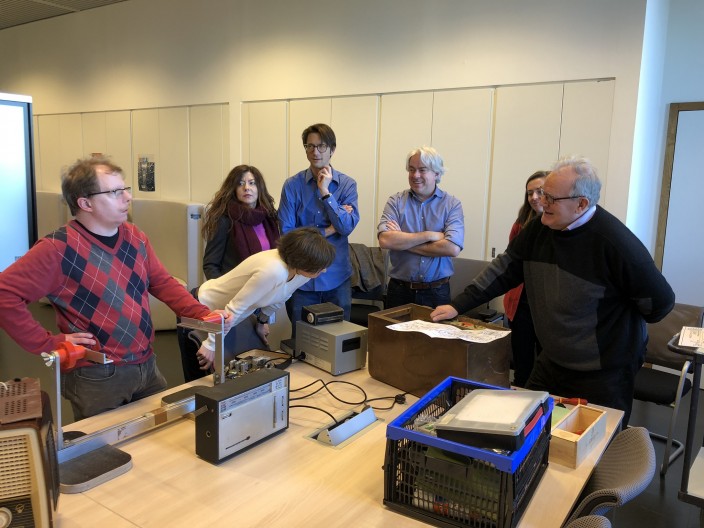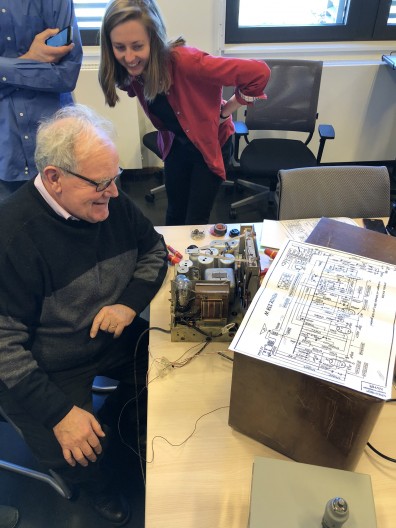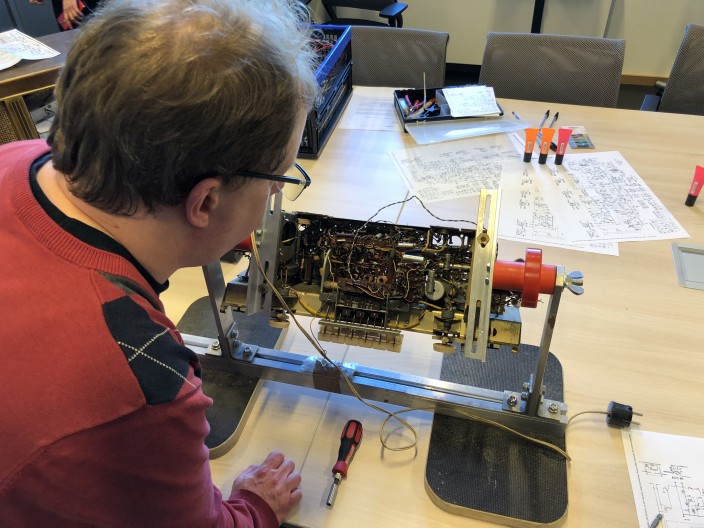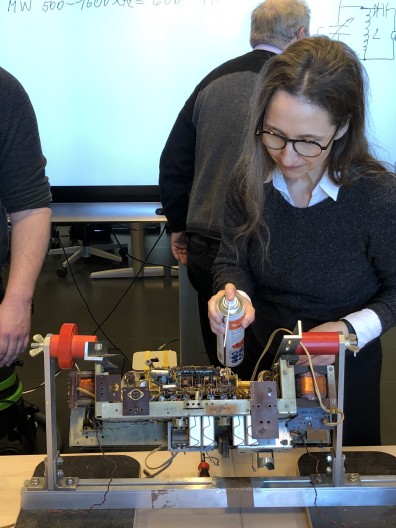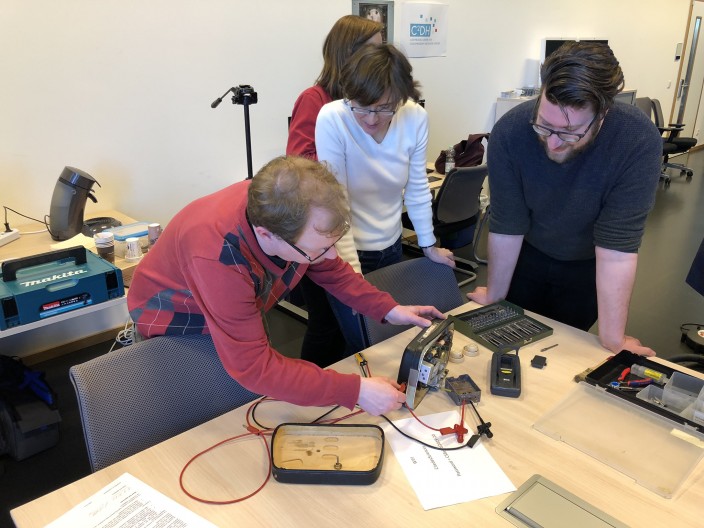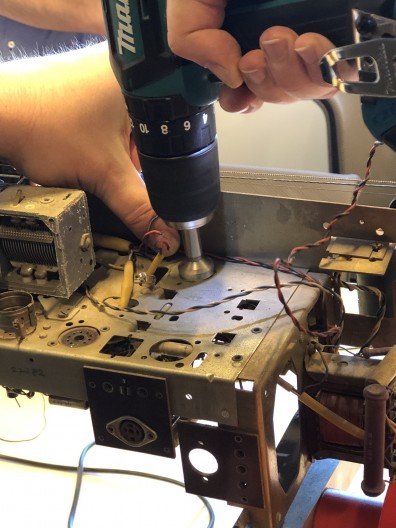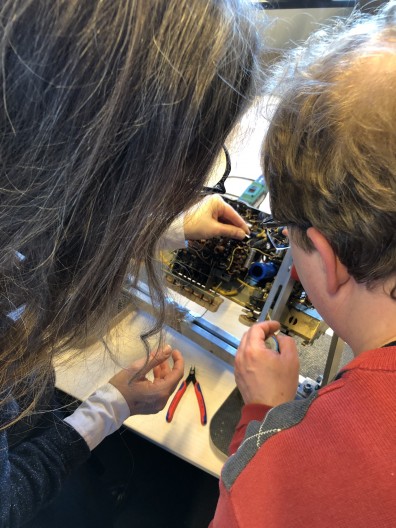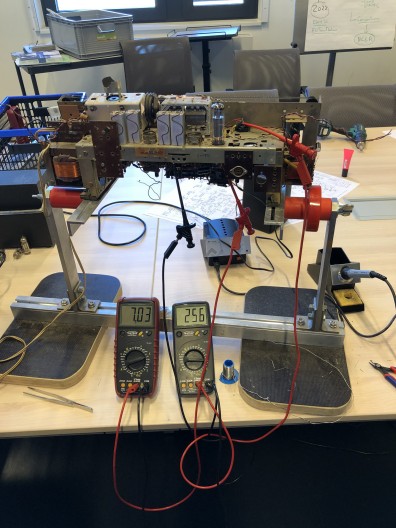On 7 February 2020 the team of the REPAIR project – Repairing Technology, Fixing Society – organised a first workshop with the aim of restoring two old radios to working condition. Under the supervision of Raoul Tholl, a physics and electronics teacher as well as an enthusiastic radio repair hobbyist, and Albert Wolter, a former senior engineer (Adjoint au Directeur de la Division des Télécommunications) at POST Luxembourg (PTT), the participants, who had little to no experience in electronics, were tasked with doing the repair themselves – all in the spirit of the C²DH’s thinkering approach: the action of playful experimentation with technological and digital tools for the interpretation and presentation of history.
Aside from the REPAIR team – Stefan Krebs, Rebecca Mossop and Thomas Hoppenheit –, the participants were Andreas Fickers, Andy O'Dwyer, Douglas Lambert and Viktoria Boretska from the C²DH, as well as Heike Weber (TU Berlin) and Gabriele Schabacher (Uni Mainz) representing the project’s advisory board. The radios in question were a Blaupunkt Sultan 2520 and a Mende 238W.
The workshop started around noon after a small lunch, with the experts giving a brief introduction to their radios and radio technology in general, and with that we were off on our own. The first step for both radios was to free the electronics from their shell, the wooden body and its speakers. The cables to the speakers were simply snipped, leaving about a centimetre or two connected to the speakers to provide enough length to solder the radio back to them at the end of the day. After a brief yet careful cleaning of the components with compressed air and brushes, we were able to check the radios’ inner workings for components that were either faulty or would most likely need to be changed sooner rather than later anyway. After consideration with the experts, it was decided to swap all the old paper-wrapped capacitors for new ones because they were so prone to failure. Each of them was snipped off at the base and the new ones were carefully soldered in their place, giving all participants the opportunity to get their hands dirty – many of them soldering for the first time in their lives. With most of the components switched out, the experts took over to change the capacitators, since the participants would have found them too difficult to reach and work on with their level of expertise.
While the participants worked on the radios, Raoul Tholl and Albert Wolter took great care in explaining why we were doing what we were doing. By referring to the radios’ schematics, accessed at the website radiomuseum.org, and with ample use of the white board (a familiar experience for Raoul Tholl as an experienced teacher), they were able to answer any questions that arose from the participants’ hands-on practice as well as their general curiosity about the topic. As most of them have a background in the history of technology and related fields it was great fun for them to see those concepts that they often only theorise about in action – for example the notion of (built-in) obsolescence in the way paper-wrapped capacitators are simply not built to last forever, or the concept of workarounds, for example powering a small radio brought along by Heike Weber with batteries outside the chassis, opting not to wire everything up as intended, or draining the electricity stored in capacitors with a light bulb instead of letting it disperse naturally in order to work on objects without the risk of being electrocuted. Likewise, we could observe how old technologies are generally not simply replaced by something new, but that old and new most often co-exist – even in the same chassis.
While we were missing some components to restore the Mende completely, work on the Sultan was finished just in time for the end of the workshop. After a final check with a multimeter to make sure that all the new components had indeed been replaced correctly and that the currents measured at key points of the radios’ schematics (again always referring to the provided blueprint and explaining the wiring layout) were correct, as well as a rudimentary test of function – listening for an audible humming –, Raoul Tholl carefully soldered the electronics back to the speaker. It was time for the final test. With great anticipation everybody watched and listened attentively when the radio was finally powered on, all parts connected, and cheered loudly as we were greeted with the familiar voices of RTL.



